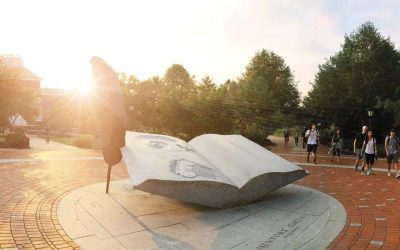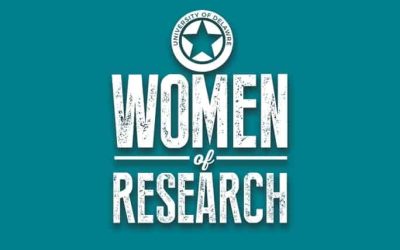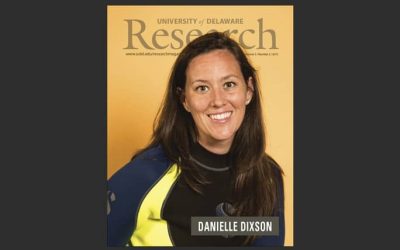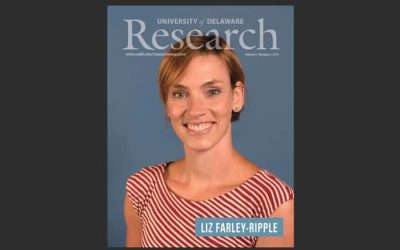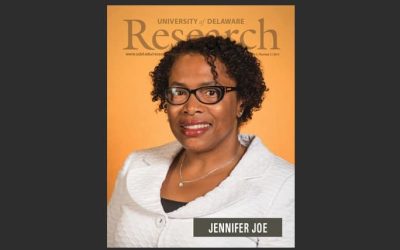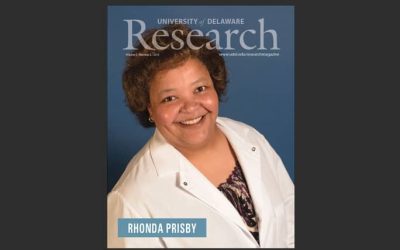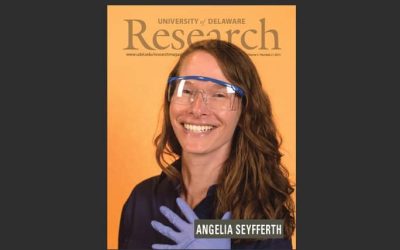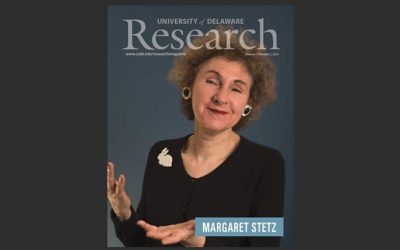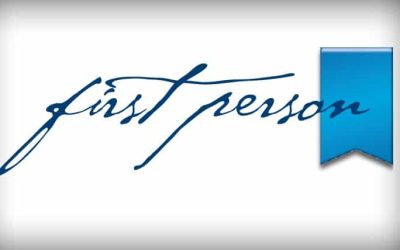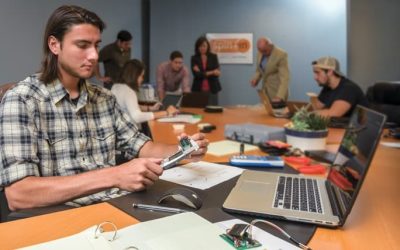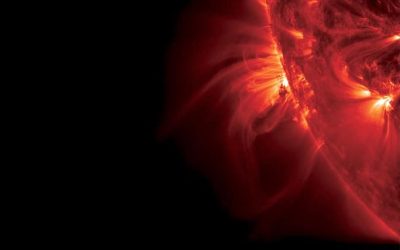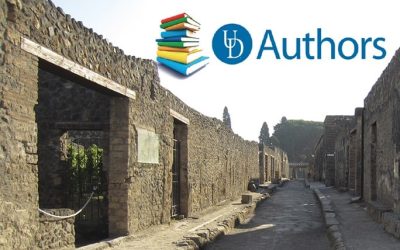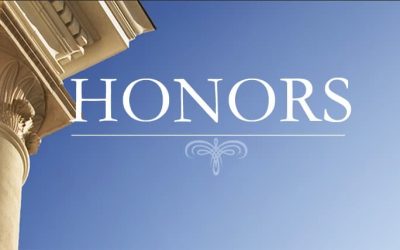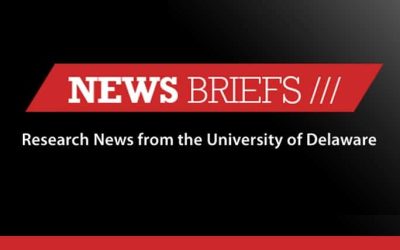
Making it clear
For the past three years, almost 90 educators from around Delaware and Maryland have been doing just that sort of thing with scientists and environmental experts from the University of Delaware and the University of Maryland. The goal is to develop a richer understanding of climate change and build effective activities and instruction plans to help their students understand the data and find potential solutions, too.
All have been part of the Climate Change Academy hosted by the two-state partnership known as MADE CLEAR (an acronym that stands for Maryland Delaware Climate Change Education, Assessment and Research). The work is supported by a five-year, $5.3 million grant from the National Science Foundation, which expects to come away with models to help teachers around the nation integrate climate change studies into many areas of instruction—science, economics, health, geopolitics, engineering, to name a few.
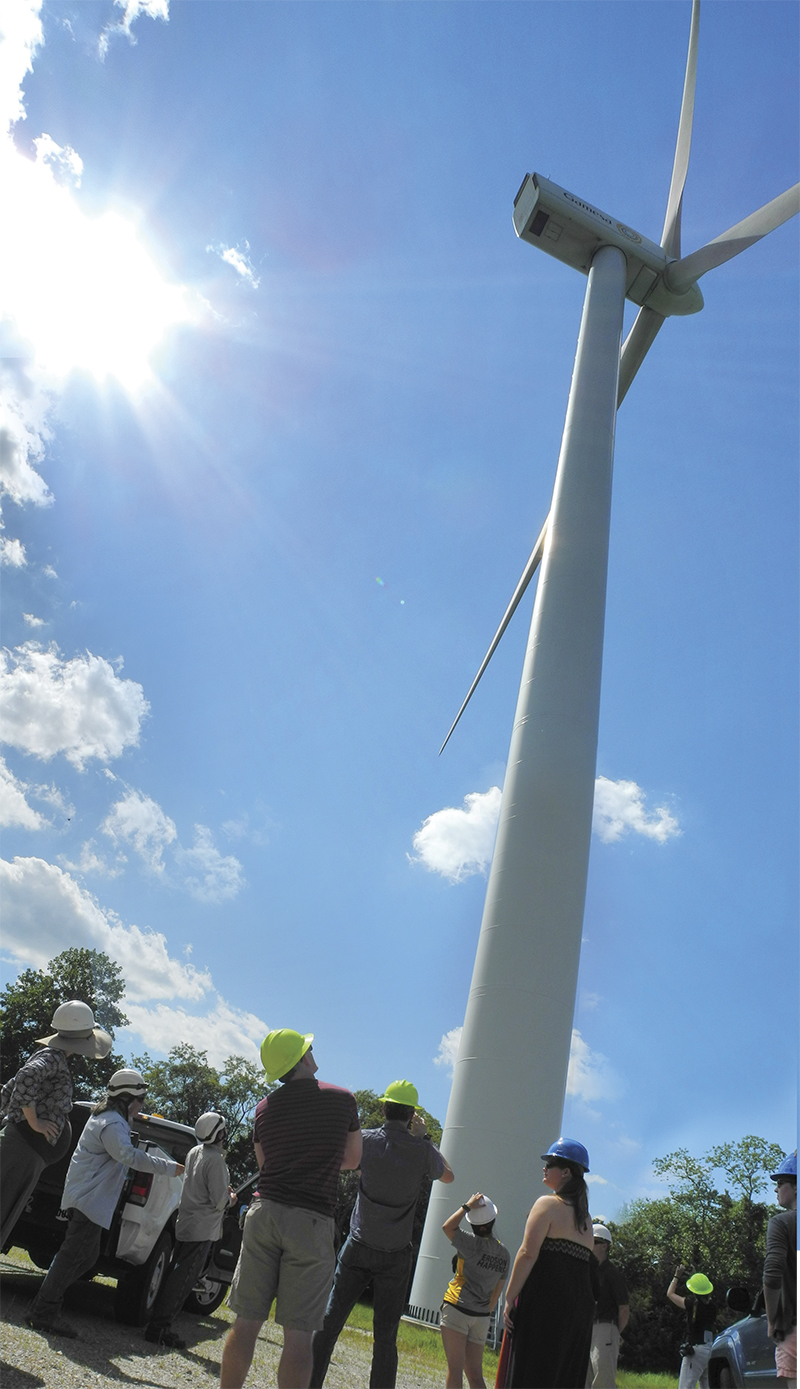
Educators from Delaware and Maryland had a close encounter with UD’s wind turbine in Lewes during a daylong workshop of the Climate Change Academy in July.
“It’s great to work with educators and all the experts,” he said. “It’s really nice to hear it from the people whose boots are on the ground—‘Here’s what we know. Here’s what we think. Here’s why it’s important….’ That expert testimony added so much depth.”
The subject of climate change injects controversy into many conversations, but it made global headlines again in the past year when leaders as diverse as Pope Francis (who has a background in chemistry) and the Group of 7 (G7)—officials from Canada, France, Germany, Italy, Japan, the United Kingdom and the United States—called for significant, concerted action to address the challenges.
Delaware and Maryland are among more than a dozen states that have adopted the Next Generation Science Standards, an upgraded guide to what students in the United States should know and be able to do in science. The science of climate change is included in those standards and the Departments of Education for both states have partnered in the MADE CLEAR work.
“We need to help the next generation understand what’s going on on our planet Earth, what it means and what they can do about it,” said Don Boesch, professor of marine science and president of the University of Maryland’s Center for Environmental Science.
Boesch said the partnership was struck after he contacted Nancy Targett, who then was dean of UD’s College of Earth, Ocean, and Environment and now is UD’s acting president. Targett has been a strong supporter of the MADE CLEAR program.
“We chose to do this in a very systematic way throughout two states,” Boesch said.
Participating educators have studied the science and theory, experimented with heat and ice, charted data and tromped around beneath UD’s 256-foot-high wind turbine during a daylong workshop at the Lewes campus.
Salawitch, professor in the Department of Atmospheric and Oceanic Science and the Department of Chemistry and Biochemistry at the University of Maryland, discussed such things as atmospheric radiation, heat-trapping gases and rising temperatures. He underlined the importance of solar energy as a source of sustainable electricity for developing countries.
Petty, a research associate at Maryland and a polar scientist with the National Oceanic and Atmospheric Administration (NOAA), described changes in polar regions and helped educators understand the different kinds of ice—sea ice, ice sheets, ice shelves, glaciers, icebergs, ice caps—and how they interact.
They spoke to classroom teachers from middle schools and high schools as well as “informal” community-based educators from the National Aquarium in Baltimore, NorthBay Adventure and the Midshore Riverkeeper Conservancy.
Educators studied charts of data showing global changes in ocean temperatures, sea levels, air temperatures and other vital measurements, discussed the difference between weather and climate, commiserated over how to leverage time and other resources, tested a variety of activities for students to use in classroom and field work, and asked lots of questions.
Chris Petrone, marine education specialist with the University of Delaware Sea Grant program, discussed photovoltaics and energy alternatives, then led participants through several kit-based projects that demonstrated the difference between windmills and wind turbines and gave them a chance to test power generation efficiencies.
As their understanding and experience grew, education specialists from the University of Maryland and UD helped educators develop plans for future instruction. The goal is to help students build critical thinking skills, examine evidence, think through the challenges and impact of climate change and explore potential solutions.
“The carbon cycle, weather systems, general climate science—when you hear the technical reports from research you can provide a more deep, accurate and relevant presentation,” said Pat Harcourt, Maryland project manager for MADE CLEAR. “You also get more of an idea how science works, making the best explanation based on incomplete information. You’re never going to know everything, but that’s how science works. It’s not only open to, but depends on, new and more complete information. So having the science and having to translate it for your own students is a very complex task.”
Appoquinimink’s Ferrell has participated since the first year of the program and now is among its cadre of teacher leaders. In an August workshop, he led participants through an engineering activity to demonstrate different ways to address specific problems.
“The first year had lots of information—here’s the science,” he said. “Then they gave us a lot more freedom to develop how to teach it. Last year was much more classroom-centric. This year has been a blend of the two philosophies.”
He loves the collaboration and the chance to think things out together.
“I am really, really enjoying the opportunity to stand with expert scientists and expert teachers,” he said.
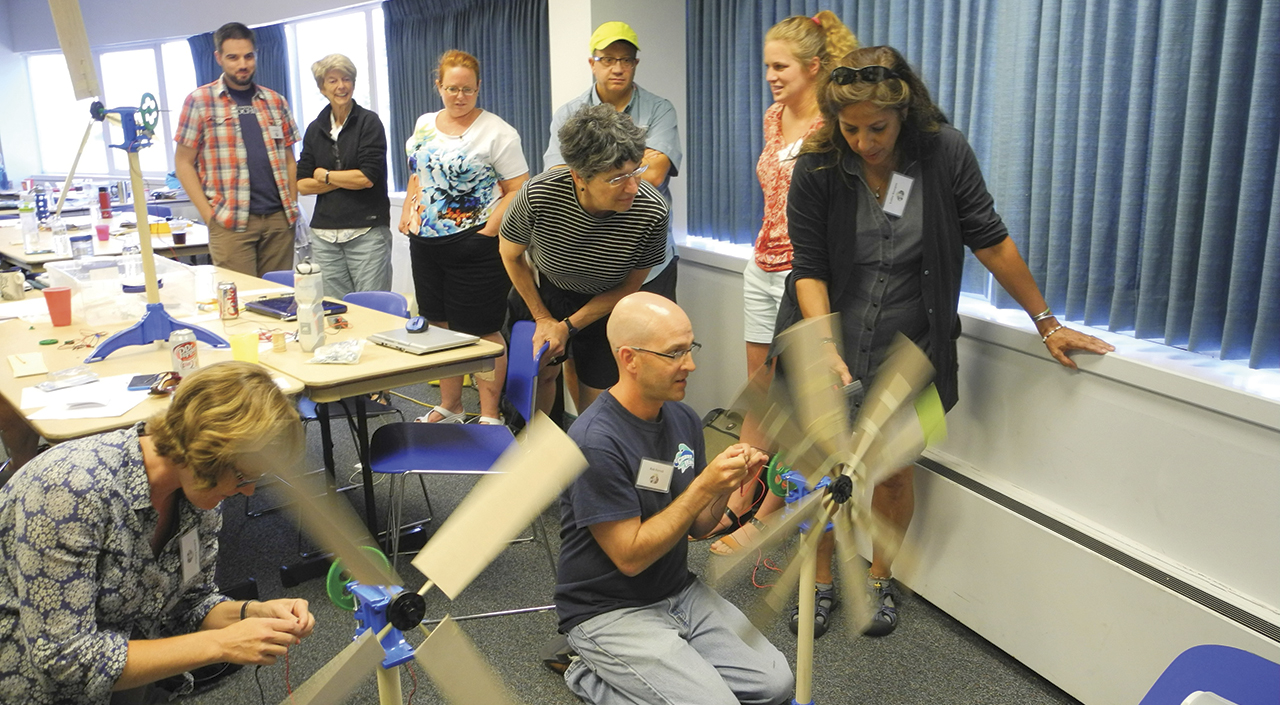
Eighth-grade science teacher Robert Ferrell (lower right) of Appoquinimink School District gets his team’s model spinning during a study of turbine mechanics.
MORE STORIES
ADVANCE-ing UD
Seven faculty members are highlighted in this issue of UD Research. Indeed, there are commonalities among them—a steadfast commitment to excellence, unrelenting intellectual curiosity, mentors and role models who inspire, and a disdain for the status quo. I encourage you to read their stories to learn about their inspirations, the challenges they have faced and the scope and quality of their scholarly endeavors.
Women of Research
Extraordinary research is underway at the University of Delaware, and women are all over it. We profile seven researchers who offer insight into their work—from coral reefs to corporations—what hurdles they have cleared and what keeps them moving forward.
Danielle Dixson
A chance encounter with a tour guide at the Shedd Aquarium in Chicago is what sparked Minnesota native Danielle Dixson’s interest in marine biology. “I was 5 years old and the guide gave me a book for asking a clever question about whales,” she says.
Liz Farley-Ripple
Elizabeth Farley-Ripple did not set out to become an education researcher. As an undergraduate at Georgetown University, she started out majoring in Latin American Studies. Then came Professor Bill McDonald’s sociology course focusing on research methods. “I had an aha moment,” says Farley-Ripple. “I realized I could have an impact—and actually apply the ideas I had been reading about.”
Jennifer Joe
Jennifer Joe, the Whitney Family Professor of Accounting in the Alfred Lerner College of Business and Economics, attributes positive experiences with her professors in college as the impetus for her pursuit of an academic career.
Rhonda Prisby
Rhonda Prisby had a plan for her master’s degree in exercise physiology. She expected to work in a cardiac rehabilitation clinic. Then a professor mentioned something she hadn’t considered—her potential as a researcher.
Angelia Seyfferth
Having had the chance to conduct research taking water samples on the Chesapeake Bay early in her undergraduate studies, Angelia Seyfferth, assistant professor in the Department of Plant and Soil Sciences, is hoping to pass her enthusiasm for research to young scholars in her lab.
Margaret Stetz
As a scholar with diverse interests from 19th-century British literature to military history and fashion studies, and who shares her work in a variety of academic and community forums, Margaret D. Stetz might be expected to have difficulty summarizing what she does.
Cathy Wu
For Cathy Wu, becoming a bioinformatics expert was kind of accidental. Armed with a Ph.D. in plant pathology and a postdoc in molecular biology, she followed her husband on a job move to Tyler, Texas, in the mid-1980s, but was unable to land a good faculty position there.
Never underestimate the power of good mentoring
A few years ago, a newly hired female faculty member had the following experience: A male colleague responded to her hallway greeting by saying hello and adding, “I hope everyone is making you feel welcome.”
Spin in spins out innovation
The University of Delaware’s “Spin In” program, founded, managed and trademarked by the Office of Economic Innovation and Partnerships, connects University undergraduate students with community entrepreneurs and early-stage startups to give them an inside look at business innovation in action and a chance to apply what they’re learning in real-life situations.
Solar Strong
The vast majority of the sun’s extraordinary power remains out of reach—absorbed, deflected or otherwise inaccessible to today’s power-hungry masses—but University of Delaware researchers continue their quest to capture more, store more and deploy it more efficiently.
Slaves’ lives emerge from ancient ruins
“Detfri slave of Herennius Sattius” and “Amica slave of Herennius” reads the terra-cotta tile. It was discovered atop the ancient temple in Pietrabbondante, a town tucked into the bare rock and evergreen-covered mountains more than 100 miles east of Rome.
Honors
• Dugan named Truman Scholar
• Overby elected to board of Oak Ridge consortium
• Backbone of the profession
Fearsome Fridays
Tom Fernsler, “Dr. 13,” now retired from the Delaware Center for Teacher Education, knows a lot about Friday the 13th. Do you? Take our quiz and find out!
News Briefs
• Changing the color of light
• What’s it really mean if a CEO is greedy?
• Research All-Stars field new findings




